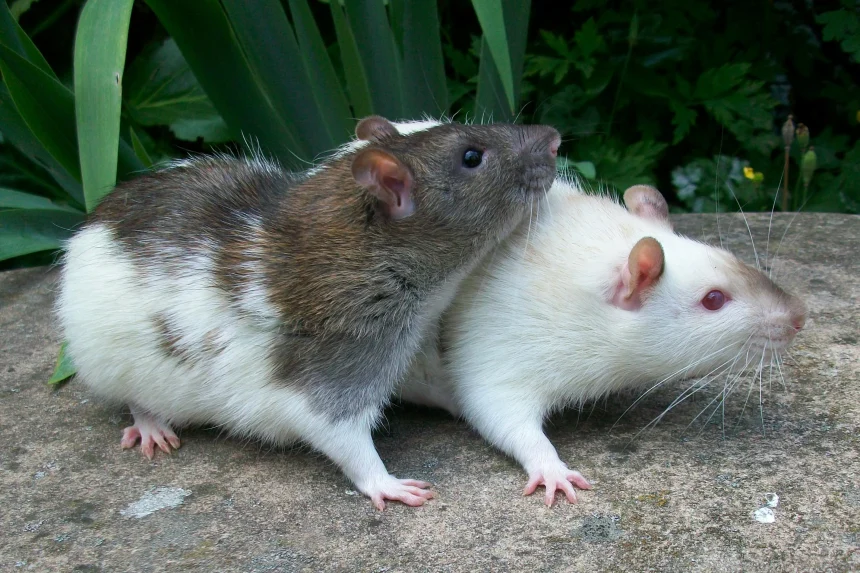Introduction
The tñacuache a name that often evokes curiosity—refers to the opossum, a remarkable marsupial found predominantly in Latin America. From the lush rainforests of Mexico to the sprawling urban areas, the tñacuache plays a critical role in the ecological web. Despite its importance, this unique creature is often overlooked in discussions about wildlife conservation and environmental health. In this article, we will explore the biology, habitat, behavior, diet, cultural significance, and conservation of the tñacuache, uncovering why this small animal is a vital part of the ecosystems it inhabits.
What is a Tñacuache?
The tñacuache is the Latin American term for the opossum, specifically the Virginia opossum (Didelphis virginiana) or other similar species of marsupials. The term “tñacuache” is most commonly used in Mexico and other Central American countries. Like many marsupials, tñacuaches give birth to underdeveloped young that continue to grow in the mother’s pouch.
Classification and Biology of the Tñacuache
The tñacuache belongs to the family Didelphidae and is recognized for its prehensile tail, sharp teeth, and nocturnal behavior. Marsupials, unlike placental mammals, give birth to underdeveloped young that continue to grow in the mother’s pouch. The Virginia opossum is the most widely distributed opossum species in North America and parts of Latin America.
Key physical traits of the tñacuache include:
- Size: Adult tñacuaches typically measure between 40 and 60 cm in length (including their tail) and weigh between 2 to 6 kg.
- Coloration: Their fur is typically gray or silver, with a white face and dark ears.
- Tail: The tail is long, prehensile, and naked, allowing the tñacuache to grasp branches and other objects.
Unique Adaptations for Survival
Tñacuaches are remarkably adaptable animals, thriving in a variety of environments, from forests to urban areas. Their nocturnal habits and omnivorous diet make them highly resourceful survivors.
One of their most famous adaptations is the ability to “play dead” or “play possum” when threatened by predators. This involuntary behavior, known as tonic immobility, involves the animal becoming motionless and releasing a foul-smelling secretion from its anus to mimic the scent of a dead animal. This natural defense mechanism helps them escape predators who prefer fresh prey.
Habitat of the Tñacuache
Tñacuaches are found in a variety of habitats, primarily across North America, Mexico, and Central America. They thrive in both natural environments and human-made areas, making them highly adaptable creatures.
Forests and Woodlands
In the wild, tñacuaches prefer tropical forests and woodlands, where they can find shelter in hollow trees, fallen logs, or thick underbrush. These forests provide the perfect setting for tñacuaches to forage for food and build nests in high branches. In these environments, they often seek shelter in tree hollows or abandoned burrows created by other animals.
Urban and Suburban Areas
Tñacuaches have increasingly adapted to urbanization. In cities and towns, they are often seen scavenging through trash bins, rummaging in gardens, or even taking shelter in attics and garages. Urban environments offer them a steady supply of food, particularly discarded food items, making them highly successful in these areas. However, this adaptation also exposes them to risks such as traffic accidents and predation by domestic animals.
Wetlands and Agricultural Zones
In some areas, tñacuaches also inhabit wetlands and agricultural zones, where they can find a variety of foods, including crops like fruits and vegetables. Their ability to adapt to human agricultural practices often results in conflicts with farmers, who may consider them pests due to crop damage.
Diet of the Tñacuache
The tñacuache is an omnivorous scavenger, meaning its diet is extremely diverse. Its opportunistic feeding habits allow it to thrive in various environments, from the dense forests to urban garbage bins.
Fruits and Vegetation
Tñacuaches are fond of fruits such as bananas, guavas, and melons. These fruits provide essential sugars and nutrients that help sustain them. They are also known to eat roots, leaves, and other plant matter, which are abundant in the forests and urban gardens where they dwell.
Insects and Small Animals
While fruits make up a significant portion of their diet, tñacuaches also hunt insects like beetles, crickets, and grasshoppers. They are opportunistic feeders, and when the opportunity arises, they will also consume small mammals, birds, and eggs. Their sharp teeth and dexterity allow them to catch and consume prey efficiently.
Scavenging and Carrion
As scavengers, tñacuaches are essential players in the ecosystem. They consume carrion—decaying flesh of dead animals—which helps in the natural process of decomposition and nutrient recycling. Their ability to clean up carcasses reduces the spread of disease and contributes to the health of the environment.
Feeding Behavior
Tñacuaches are nocturnal feeders, foraging primarily at night when they are less likely to be seen by predators. Their keen sense of smell and hearing guide them to food sources, whether it be fruit on the ground or insects hiding under logs.
Reproduction and Life Cycle of the Tñacuache
Like all marsupials, tñacuaches have a unique reproductive process. Their short gestation period and the fact that their young develop outside the womb in a pouch are defining characteristics of their life cycle.
Gestation and Birth
The gestation period for a tñacuache is incredibly short, lasting only about 12 to 13 days. After birth, the tiny, underdeveloped young crawl into the mother’s pouch, where they latch onto a teat and continue to develop for about two months. At birth, the young are extremely small and resemble tiny, blind embryos.
Development and Growth
As the young grow, they leave the pouch and begin to ride on their mother’s back for protection and warmth. This behavior typically lasts for several months, during which time the young learn vital survival skills, including foraging and evading predators. At about four months old, the young are capable of foraging on their own, though they may continue to stay close to their mother.
Longevity
In the wild, tñacuaches typically live between 2 and 4 years, though many fall victim to predators or accidents before reaching adulthood. In captivity, where predators are absent and food is abundant, they may live up to 7 years.
Ecological Role of the Tñacuache
Tñacuaches play a critical role in maintaining the balance of their ecosystems. Their ability to adapt to various environments and consume a wide range of foods makes them valuable to the health of the environment.
Pest Control
Tñacuaches are natural pest controllers. Their diet of insects, such as beetles and ants, helps reduce the populations of harmful pests. This is particularly important in agricultural areas where pests can damage crops.
Decomposition and Nutrient Recycling
As scavengers, tñacuaches help break down organic matter, playing a crucial role in the decomposition process. By consuming carrion, they contribute to the recycling of nutrients back into the soil, which supports plant growth and the overall health of the ecosystem.
Food Source for Predators
Tñacuaches are also an important food source for larger predators, such as hawks, owls, and coyotes. Their place in the food web helps sustain the populations of these predators, contributing to biodiversity.
Tñacuaches in Latin American Culture
In many Latin American countries, the tñacuache has earned a special place in local folklore. Its cunning behavior and ability to survive in difficult circumstances have made it a symbol of resilience and intelligence.
Folklore and Stories
The tñacuache is often featured in oral traditions and fables, where it is depicted as a clever, resourceful animal capable of outwitting other creatures. For example, some stories portray the tñacuache as a trickster who uses wit and charm to overcome seemingly insurmountable obstacles.
Symbol of Resilience
In the context of Latin American folklore, the tñacuache is often seen as a symbol of survival against the odds. Its ability to adapt to urban areas, as well as its nocturnal habits, have made it a figure of cultural resilience. Many communities admire its ability to persist despite the challenges it faces from both predators and humans.
Threats Facing the Tñacuache
Despite their adaptability, tñacuaches face several threats that impact their populations across the Americas. These threats primarily stem from human activities and environmental changes.
Habitat Loss
One of the biggest challenges for the tñacuache is habitat destruction. As forests are cleared for agriculture and urban expansion, the tñacuache loses its natural shelter and food sources. This leads to population declines and forces the animals to move into urban areas, where they are at risk of accidents and conflicts with humans.
Traffic and Predation
In urban areas, tñacuaches are often struck by vehicles, leading to a high rate of fatalities. Predators like dogs, foxes, and hawks also pose significant threats to their survival, especially in suburban environments.
Pollution
Pollution, especially plastic waste and chemical contamination, can harm the tñacuache’s health. Consuming contaminated food sources or becoming trapped in discarded plastic can be fatal to these animals.
Conservation Efforts and How We Can Help
While the tñacuache is not currently classified as endangered, conservation efforts are necessary to ensure its long-term survival. Organizations dedicated to wildlife protection are working to preserve natural habitats and reduce human-wildlife conflict.
Habitat Preservation
One of the most effective ways to help the tñacuache is by preserving its natural habitats. Supporting policies that protect forests and wetlands, as well as reducing deforestation, can help maintain the ecosystems that the tñacuache depends on.
Educating the Public
Raising awareness about the role of tñacuaches in the ecosystem and the threats they face is crucial. Community engagement and education programs can help reduce human-wildlife conflict and promote coexistence between tñacuaches and local populations.
Conclusion
The tñacuache is far more than just a nocturnal scavenger; it is an integral part of the ecosystems it inhabits. From its ecological role as a pest controller and nutrient recycler to its cultural significance in Latin American folklore, the tñacuache plays a vital part in maintaining biodiversity. However, this resilient animal faces numerous threats, including habitat loss, traffic accidents, and pollution. To ensure that future generations continue to experience the wonders of the tñacuache, it is essential to support conservation efforts and work towards sustainable living practices that protect these unique creatures and their habitats.
FAQs
What is a tñacuache?
The tñacuache, also known as the opossum, is a nocturnal, omnivorous marsupial found primarily in Latin America. It is known for its adaptability to various environments and its unique ability to “play dead” as a defense mechanism.
Where can tñacuaches be found?
Tñacuaches are found throughout North America, Mexico, and Central America. They thrive in forests, woodlands, urban areas, and agricultural zones, where they can scavenge for food and seek shelter.
What do tñacuaches eat?
Tñacuaches are omnivores, meaning they eat a wide variety of food. Their diet includes fruits, insects, small animals, and even carrion. They are opportunistic feeders, eating whatever is available in their environment.
How do tñacuaches protect themselves from predators?
Tñacuaches have a unique defense mechanism known as “playing possum” or tonic immobility. When threatened, they become motionless and release a foul-smelling secretion to mimic the scent of a dead animal, which helps deter predators.
What is the lifespan of a tñacuache?
In the wild, tñacuaches typically live between 2 to 4 years. However, in captivity where there are no predators, they can live up to 7 years.
Are tñacuaches endangered?
Currently, tñacuaches are not classified as endangered. However, they face several threats such as habitat loss, traffic accidents, and pollution, which could negatively impact their populations in the future. Conservation efforts are essential to ensure their long-term survival.





